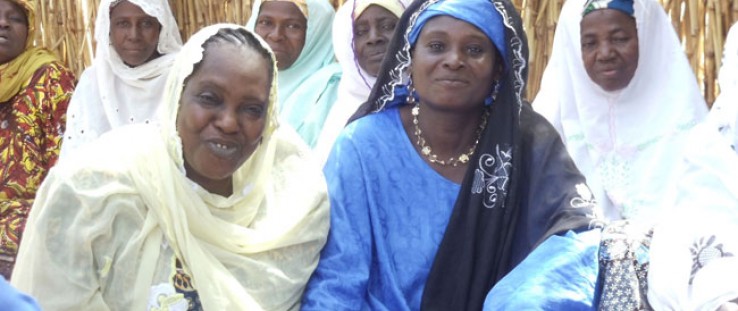 Seated among other women from the village, Madame Moringa poses for a photo in April 2012.
CLUSA
Seated among other women from the village, Madame Moringa poses for a photo in April 2012.
CLUSA
 Seated among other women from the village, Madame Moringa poses for a photo in April 2012.
CLUSA
Seated among other women from the village, Madame Moringa poses for a photo in April 2012.
CLUSA
In southwestern Niger, where rainfall is sparse and droughts are common, the landscape of Dantchandou village was once characterized by expanses of dry, dusty ground dotted with shrubs and the occasional tree. Today, in its place is a lush landscape teeming with moringa, a drought-resistant, fast-growing tree with highly nutritious leaves.
Latchi Djibo, a divorced mother of eight and the secretary of a local moringa producers association, lives in town. A sign over the entrance to her home reads Chez Madame Moringa. “I call myself Madame Moringa because moringa is my husband now. Moringa helps me take care of my family,” she says.
Through a USAID-funded project that she joined in 2010, Djibo has learned to grow, process and sell moringa. By collecting leaves from the moringa trees she has planted around her home, Djibo can prepare a variety of moringa-based dishes for her family and to sell in the village. She also buys moringa leaves from other producers to sell in neighboring markets, sometimes traveling as far as the capital of Niamey, located 50 miles away.
“In addition, I implement what I have learned with the project,” Djibo said. “I advise on the nutritional virtues [of moringa] by talking to my customers about the therapeutic effects, especially for women and children.”
The project she speaks of is a $1.4 million USAID effort to bolster household food security, improve nutrition and strengthen livelihoods for vulnerable populations in Niger. It began in 2009, following the global food crisis in 2008 when food prices skyrocketed and the poorest had even greater difficulty feeding their families.
Between 2009 and 2012, USAID—working with the National Cooperative Business Association’s Cooperative League of the United States of America (CLUSA) International program—reached more than 11,000 Nigeriens with agricultural inputs, like seeds and tools, and trainings on how to successfully plant, grow and market moringa. USAID’s support doubled the amount of moringa cultivated in the country and helped increase beneficiaries’ average annual moringa-related income by 500 percent—from $23 to $140—in three years.
The moringa project collaborated with Aziki, another CLUSA project, as well as implementers Helen Keller International, World Vision, Save the Children and Mercy Corps, to share technical expertise and lessons learned. By layering the moringa project over those of other donors, the trees were produced across a wider area with collateral benefits for the population.
Reliable evidence indicates that the moringa tree appeared in the region in the early 1800s when members of the Hausa ethnic group brought back seeds from pilgrimages to Mecca. Initially, the plant was used for medicinal purposes and to create “living” fences to keep livestock out of cultivated areas. However, by the mid-1900s, farmers in the Maradi region had begun to grow moringa as a food crop. It became more popular in the late 1960s after severe drought hit the region and the leaves were one of the only sources of nutrition available.
Yet, a number of factors made it difficult for moringa to flourish in Niger, including restricted water access and a shortage of quality seeds. This is where the USAID project stepped in. Focusing on regions where water was readily available, the project worked with participants to enhance their irrigation systems. Improved seed varieties were introduced and participants witnessed firsthand how quickly and substantially the moringa grew.
Before long, communities that were initially reluctant to invest their own resources into a unfamiliar crop, came to embrace the vitamin-packed leaves.
“What makes the program so effective is that it operates on two levels,” said Victor Bushamuka, acting West Africa principal regional adviser for USAID’s Office of U.S. Foreign Disaster Assistance. “It addresses the immediate needs of a family while also addressing long-term concerns. The program helps communities become more resilient by giving them the knowledge and tools to better withstand the next crisis.”
“No More Hunger”
With the income she earns from selling moringa leaves and dishes, Djibo buys maize, rice and other food to feed her family, as well as clothes, school supplies and medicines. She has also purchased animals, including sheep and goats, which she can sell if necessary. Since starting her moringa enterprise, Djibo has earned approximately $80 every month—a substantial amount in Niger, which ranked 186 out of 187 countries on the U.N. Human Development Index in 2011. Perhaps more importantly, no one in her family has been malnourished since she started farming and using moringa.
“While there have been projects in my village, and there may still be a few others, there has not been another project like the moringa one, which has pulled us out of extreme poverty, malnutrition and hunger,” said Djibo. “Hareyban—no more hunger—for anyone who wishes to plant moringa!”
Her exuberance is not misplaced. Often called the Tree of Life, a moringa seed can grow more than 10 feet tall within one year and begin producing leaves within three months of planting. Even with minimal watering, a tree can provide an adequate crop of highly nutritious leaves, allowing families to supplement their food stocks year-round, but particularly during the annual dry season.
Moringa leaves contain significant amounts of protein, calcium, iron and vitamins. By consuming only two tablespoons of moringa leaf powder, adults can meet one-third of their daily protein needs, 75 percent of their calcium needs and 100 percent of their vitamin A needs.
In a country where half the children suffer from chronic malnutrition, moringa is like a magic bullet for growing bodies.
Nigeriens recognize the nutritional value of moringa leaves and have integrated them into their diets. As a result, the demand for moringa far exceeds the local supply, leading Niger to import approximately 10 metric tons of dried moringaleaves annually from neighboring Nigeria.
“Despite the increase in moringa production due to the project’s assistance, the demand still outpaces supply, especially in urban centers. Therefore, the marketing of moringa has become less of a risk to producers,” said Zakaria Mamoudou, team leader for CLUSA International in Niger. “This project has encouraged new and existing moringa producers to take full advantage of the various commercial and nutritional opportunities. Now, moringa is known throughout by the people of Niger because of the project’s nutritional education sessions and trainings on moringa cultivation, processing and commercial development.”
Strengthening Livelihoods, Fostering Resilience
Owing to poor rains during the 2011 agricultural season and above-average food prices sparked by low supply, most families throughout the Sahel region, including in Niger, had trouble producing or purchasing food in 2012. In response to an alarming uptick in regional food insecurity, USAID provided an additional $1 million to expand the moringa program to 10,000 Nigeriens in the Tahoua and Tillabéri regions, areas that are new to moringa production.
Unfortunately, food insecurity—and the acute malnutrition that it often triggers—are recurring problems in this arid region, which stretches along the southern edge of the Sahara Desert across Africa and over many of the world’s poorest countries. And the situation is likely to worsen as temperatures increase across the Sahel and rainfall becomes more erratic. These factors reduce the amount of time that families have to recover from one drought to the next. Vulnerable families who have little to no productive assets are often hit the hardest.
“In a region where families are on the brink of crisis, encouraging them to grow and sell a highly nutritious, marketable food item like moringa is a win-win situation,” said Bushamuka. “Not only is USAID helping to improve their health and diversify their livelihoods, we’re ultimately helping communities get to a point—both physically and economically—from which they can better withstand the next inevitable crisis.”
Back in Dantchandou, Djibo regularly entertains visitors eager to witness the greening of her village. “Before, I was unknown,” she said, “but now, thanks to the project, my name and the name of my village is everywhere, and I receiv[e] phone calls regularly just to … let me know that my moringa product is good.”







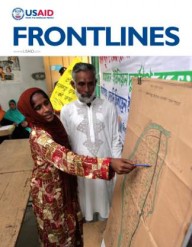

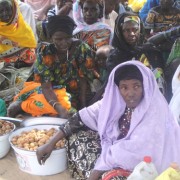
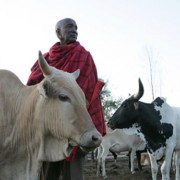
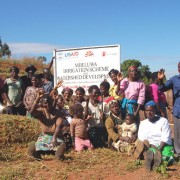
Comment
Make a general inquiry or suggest an improvement.